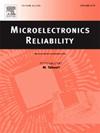Toward robust structure function-based thermal analysis: Quantitative metrics for semiconductor packaging evaluation
IF 1.9
4区 工程技术
Q3 ENGINEERING, ELECTRICAL & ELECTRONIC
引用次数: 0
Abstract
Thermal management remains a critical challenge in modern semiconductor packaging, where escalating power densities and advanced 2.5D/3D integrated architectures drive the need for accurate and reliable thermal analysis. Structure function (SF)-based thermal analysis provides valuable insights into internal heat transport mechanisms through transient temperature responses. However, its broader adoption is hindered by limitations in data quality, comparison methodologies, and the interpretability of multilayered structures. This study established a robust framework to improve the precision and utility of SF analysis in semiconductor applications. Optimal transient measurement conditions, such as initial time windows (10−6–10−5 s) and sampling density (≥10 points/decade), were identified to enhance the SF accuracy without excessive computational cost. The influence of the thermal and geometric properties was systematically evaluated, highlighting how the layer contrasts and structural voids impact the SF resolution. To overcome the limitations of existing comparison metrics, two new quantitative approaches— the Area Metric and Dynamic Time Warping Metric—are proposed, demonstrating superior sensitivity to both global and localized thermal structure changes. These findings offer practical guidance for thermal design optimization, enable defect detection, and support the development of standardized, simulation-driven SF methodologies.
迈向基于稳健结构功能的热分析:半导体封装评估的定量指标
热管理仍然是现代半导体封装的一个关键挑战,不断升级的功率密度和先进的2.5D/3D集成架构推动了对准确可靠的热分析的需求。基于结构函数(SF)的热分析通过瞬态温度响应为内部热传递机制提供了有价值的见解。然而,由于数据质量、比较方法和多层结构的可解释性方面的限制,它的广泛采用受到阻碍。本研究建立了一个强大的框架,以提高半导体应用中SF分析的精度和实用性。确定了最佳的瞬态测量条件,如初始时间窗(10−6-10−5 s)和采样密度(≥10个点/ 10年),以提高SF精度,而不需要过多的计算成本。系统地评估了热性质和几何性质的影响,强调了层对比和结构空隙对SF分辨率的影响。为了克服现有比较指标的局限性,提出了两种新的定量方法-面积度量和动态时间翘曲度量,对全局和局部热结构变化都表现出优越的灵敏度。这些发现为热设计优化提供了实用的指导,使缺陷检测成为可能,并支持标准化、仿真驱动的SF方法的发展。
本文章由计算机程序翻译,如有差异,请以英文原文为准。
求助全文
约1分钟内获得全文
求助全文
来源期刊

Microelectronics Reliability
工程技术-工程:电子与电气
CiteScore
3.30
自引率
12.50%
发文量
342
审稿时长
68 days
期刊介绍:
Microelectronics Reliability, is dedicated to disseminating the latest research results and related information on the reliability of microelectronic devices, circuits and systems, from materials, process and manufacturing, to design, testing and operation. The coverage of the journal includes the following topics: measurement, understanding and analysis; evaluation and prediction; modelling and simulation; methodologies and mitigation. Papers which combine reliability with other important areas of microelectronics engineering, such as design, fabrication, integration, testing, and field operation will also be welcome, and practical papers reporting case studies in the field and specific application domains are particularly encouraged.
Most accepted papers will be published as Research Papers, describing significant advances and completed work. Papers reviewing important developing topics of general interest may be accepted for publication as Review Papers. Urgent communications of a more preliminary nature and short reports on completed practical work of current interest may be considered for publication as Research Notes. All contributions are subject to peer review by leading experts in the field.
 求助内容:
求助内容: 应助结果提醒方式:
应助结果提醒方式:


